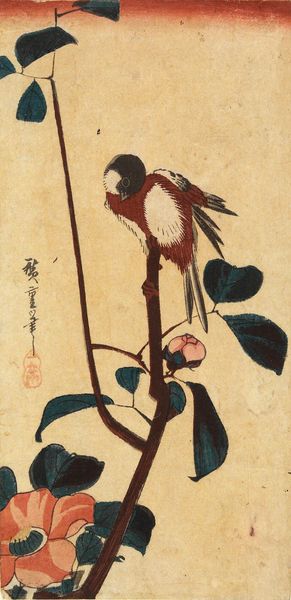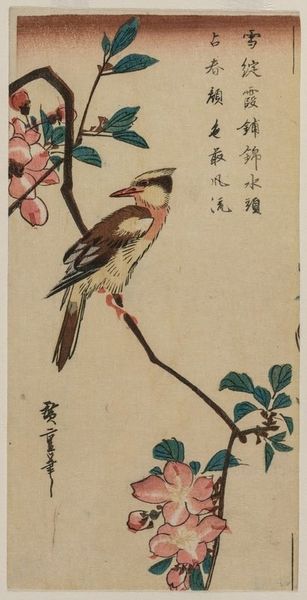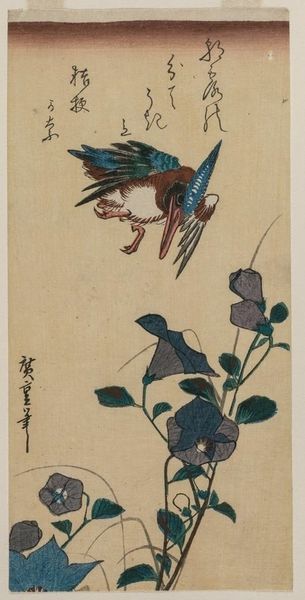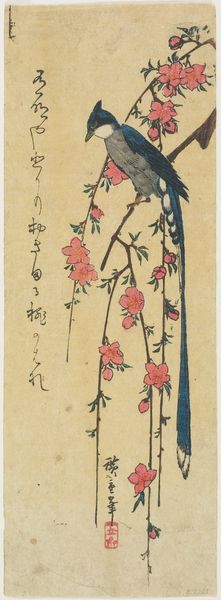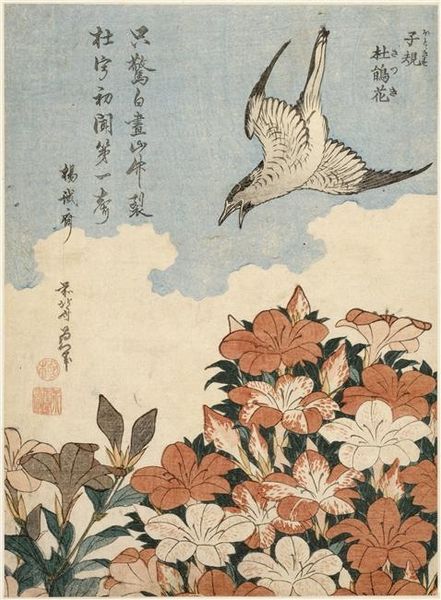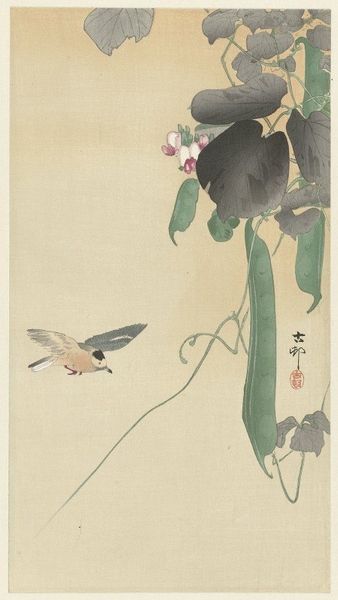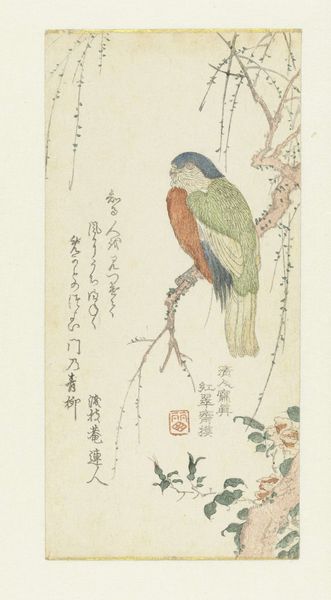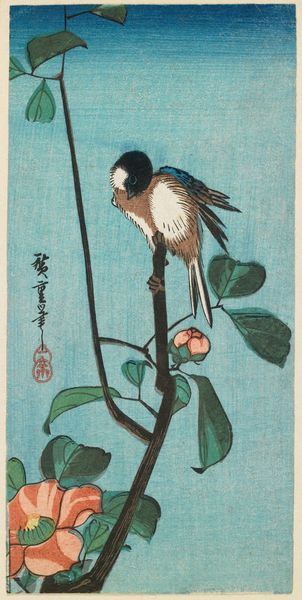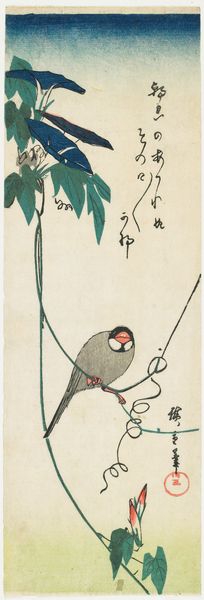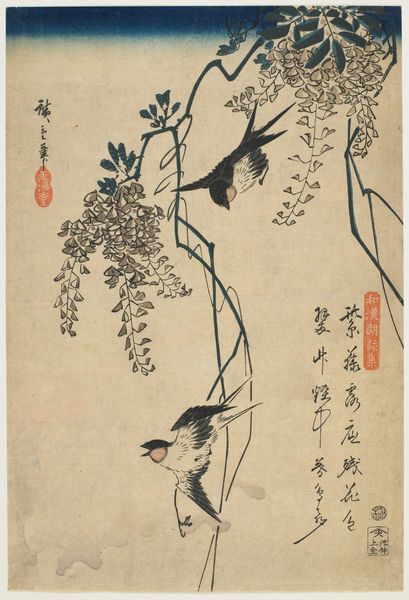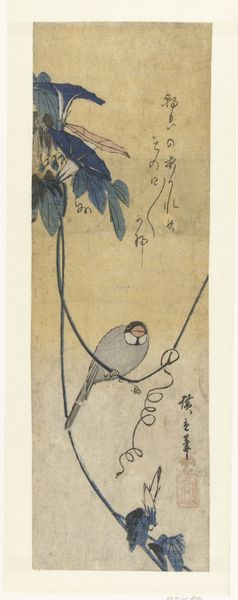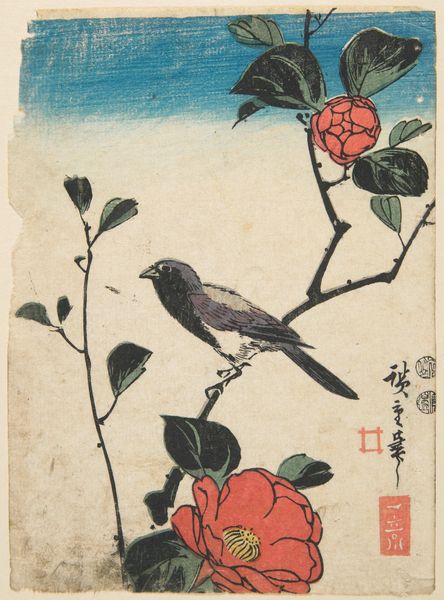
print, paper, ink
#
water colours
# print
#
asian-art
#
ukiyo-e
#
paper
#
ink
#
watercolor
Dimensions: 15 1/16 × 5 1/16 in. (38.2 × 12.9 cm) (image, sheet, chūtanzaku)
Copyright: Public Domain
Curator: This serene print, "Finch on Magnolia Branch," was created by Utagawa Hiroshige around 1835. Hiroshige was a master of ukiyo-e, that floating world style, and this piece lives at the Minneapolis Institute of Art. Editor: Ah, there’s such a lovely calm about this! The soft blues melting into the creamy whites...It's almost like the bird itself is exhaling peace into the magnolia. A small, gentle moment captured perfectly. Curator: Absolutely. The vertical format, combined with those delicate watercolor washes, enhances that feeling. Tell me, what stands out about the imagery, for you, especially thinking about symbolism? Editor: Well, the finch, often representing joy and simplicity, is perched almost meditatively amidst the blooming magnolia. The magnolia, in Eastern traditions, is a symbol of purity and nobility. It's like Hiroshige is offering us a little visual poem on finding grace in the everyday. Curator: And the composition is so artfully arranged, isn’t it? Notice how the branches and the bird's placement lead your eye downwards towards the calligraphy? It adds another layer of contemplation. Editor: Yes, and the empty space, the untouched paper, contributes to the overall balance and harmony. The Japanese aesthetic is so skillful at suggesting so much with so little. A world is conjured up out of restraint. And those tiny, perfectly placed leaves – each one seems deliberate, carrying so much meaning! Curator: Precisely. Hiroshige had a real gift for distilling the essence of nature into these beautiful prints. One can easily see why he influenced so many Western artists with the japonisme movement. Editor: This image resonates because it speaks of inner peace, found not in grand gestures, but in simple moments. This humble bird and flower serve as emblems of quiet reflection and subtle, yet profound, wisdom. Curator: A fitting end to our little exploration; now that I notice all of this, the composition just flows through my thoughts. Editor: Agreed, the piece somehow reminds us to find those quiet moments for ourselves – which is needed today more than ever.
Comments
minneapolisinstituteofart almost 2 years ago
⋮
In designing his prints of birds and flowers, Hiroshige seems to have been influenced by the work of Shijō school artists, who produced paintings in a spontaneous, simplified manner. Here, for example, the block carver captured the rapid manner in which Hiroshige rendered the slender branch, and the "boneless" (without outlines) way he depicted the leaves. The lyrical freshness of this style accords well with the buoyant mood of the poem; Delightful!After the cherry blossoms, the magnolias.
Join the conversation
Join millions of artists and users on Artera today and experience the ultimate creative platform.
